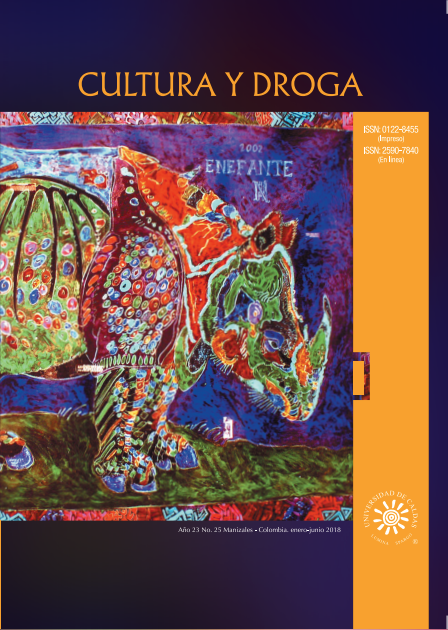Authors
Abstract
While Peru built the magnificent Inca civilization through the wisdom provided by the coca leaf, it later became the first producer of toxic derivatives of this profaned plant. Nowadays, once again, the coca leaf allows treating cocaine addiction which is demonstrated by the experience of the Takiwasi Center. Also, the healing use of Ayahuasca was discovered a few decades ago and an explosive use is produced in a short time all over the world. Will the accelerated desacralization of this medicine reach the same extremes as the misuse of coca? What can the path followed with coca teach us in relation to the use of Ayahuasca? What did the use of coca in the West respond to and what does the use of Ayahuasca respond to today?
References
Daniélou, A. (2008). Las divinidades alucinógenas. Revista Takiwasi, 1. Recuperado de https://takiwasi.wordpress.com/2008/03/08/13-alain-danielou-las-divinidadesalucinogenas1/.
Frecska, E., Bokor, P. and Winkelman, M. (2016). The Therapeutic Potentials of Ayahuasca: Possible Effects against Various Diseases of Civilization. Frontiers in Pharmacology, 7, 35.
Giove, R. (2002). La liana de los muertos al rescate de la vida, medicina tradicional amazónica en el tratamiento de las toxicomanías. Tarapoto, Perú: Takiwasi ediciones.
Guimarães dos Santos, R. (2013). Safety and Side Effects of Ayahuasca in Humans-An Overview Focusing on Developmental Toxicology. Journal of Psychoactive Drugs, 45 (1), 68-78.
Gumucio, J. (2008). La leyenda de la coca. La historia secreta de la hoja de coca y la cocaína. Caracas, Venezuela: Editorial El Perro y La Rana.
Labate, B. and Cavnar, C. (2014). Ayahuasca Shamanism in the Amazon and Beyond. Oxford, England: Oxford University Press.
Mabit, J. (1999). Ir y volver: el ritual como puerta entre los mundos, ejemplos en el shamanismo amazónico. Amazonía Peruana, XIII (26), 143-155.
Mabit, J. (2007). Ayahuasca in the treatment of addictions. En Winkelman, M.J. and Roberts, T. (Ed.), Hallucinogens and Health: New Evidence for Psychedelic Substances as Treatment. California, USA: Praeger Publishers.
Mabit, J. (2016). Le sorcier, le fou et la grâce: les archétypes sont-ils des esprits désacralisés ? Réflexion à partir du chamanisme amazonien. Recuperado de http://www.takiwasi.com/docs/arti_fra/Le_sorcier_le%20fou_et_la_grace_article_complet.pdf.
Morin, E. (2005). Introducción al pensamiento complejo. Barcelona, España: Gedisa.
Molnar, E. (2013). The responsible use of entheogens in the context of bioregionalism. European Journal of Ecopsychology, 4, 78-89.
Spangler, D. (1984). The Rebirth of the Sacred. London, England: Gateway Books.
Sotillos, S. (2013). Psychology and the Perennial Philosophy: Studies in Comparative Religion. Indiana, USA: World Wisdom.
Toolan, D. (1987). Facing West from California’s Shores: Jesuit’s Journey into New Age Consciousness. New York, USA: Crossroad Pub Co.
Verlinde, J.-M. (2014). Les impostures antichrétiennes. Paris, France: Presses Renaissance.

 PDF (Español)
PDF (Español)
 FLIP
FLIP





















